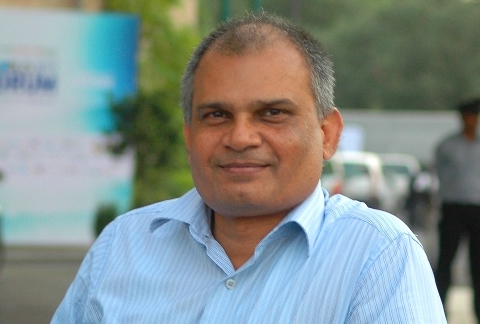By Mr. M. K. Yadava
It was in the year 2005 that on the floor of the Assembly, in the budget session, late Shri Tarun Gogoi, then Chief Minister of Assam announced that every student who would come first in the high school examination would be awarded a computer, and an amount of Rs 25.00 crore was allocated in the budget. The scheme was called Anundoram Borooah Award, named after the famous Sanskrit scholar from Assam, the 4th Indian ICS and the first Indian to become Deputy Commissioner.
When the results were announced, there were 12000+ students who stood in the first division. The task of implementing the project was given to AMTRON, the State Nodal IT Agency. It essentially fell upon me to conduct the entire programme. By no stretch of imagination, good quality PCs could be provided to all the students, leave aside bundling of software, within the budgeted amount. That’s where we embarked upon an initiative of adoption of FOSS. Fedora Core 3 was the Operating System (OS) chosen for the purpose. Since 2008 onwards, Ubuntu was chosen for bundling with the PCs. So far the Government of Assam has distributed 92,000+ PCs and laptops to students. This scheme alone has built a whole FOSS ecosystem which touches the manufacturers, OEM suppliers, software vendors, system integrators, students, parents, citizens and the government. Therefore, when 300 schools in Phase IV and 641 schools in phase V of the Rajiv Gandhi Computer Literacy Programme (RGCLP- a programme currently run in 1610 government schools of Assam were commissioned on FOSS in 2006 and 2008, no questions were asked from any quarters.
Key learning in Anundoram Borooah award scheme
1. Any FOSS initiative should be well researched in terms of Hardware and Software to be deployed. This is required as most of the vendors and suppliers appear to be agents of proprietary software and are quite insensitive to FOSS calls. However, the situation is?changing for the better as the adoption is on the increase.
2. The support for FOSS must be built from within the organization along with an ecosystem of rightly oriented vendors, Systems Integrators and support personnel. This is also a very good way of spending the savings.
3. A small core team is required to be built that constantly watches for upgrades and troubleshooting that may be required during the life cycle of the project.
The three points mentioned above may appear to be real dampers for start of FOSS in an organization.
On the contrary, the skill built up is so strong in course of time that one actually is able to see through the false propaganda of proprietary software promoters regarding support cost. This is one must investment by any organization, which pays back rich dividends.
Spread of FOSS in Assam: Flagship FOSS Projects
Today there are several key projects in the Government of Assam which are FOSS oriented end to end.
The Guwahati Medical College computerization project runs on GNU/Linux. Under the NeGP banner, the key projects on GNU/Linux are e-Districts, State Portal and SSDG.
Another important project on Gnu/Linux is GARIIASI GIS And Remote sensing Integrated Initiative for Administrative and Social Infrastructure under which FOSS based GIS is being promoted, GARIIASI has been also been funded under the NeGP banner by DIT, Govt. of India. However, in terms of visibility and impact, two key projects namely the Anundoram Borooah Award Scheme and the Assam Online Portal-Secretariat Less Paper Office (AOP-SLPO) combine can be termed as the flagship projects that have brought high visibility of FOSS in Assam.
Policy plays a role too!
The Government of Assam may be one of the first states in the country to adopt FOSS at policy level. The intent of the Government can be seen in adopting two key policies under the Information Technology Policy of Assam, 2009, the notification for which was issued on 4th August, 2009. The two enablers are Free and Open Source Software Policy (Para 3.12) and Anti-Piracy Policy (Para 3.13).
Bottlenecks in FOSS adoption
Adoption of FOSS in the Departments of the Government depend on many factors such as awareness regarding FOSS in the Department, willingness to undertake risks, resistivity of the path among the colleagues and co-workers, and most of all must go for the best attitude which largely forces the ill informed decision maker to settle for proprietary operating systems. Such attitudes are easily amenable to correction when the stakeholder is shown the economic benefits of FOSS in terms of savings that result. The Finance Department of the Government of Assam has played a major role in FOSS adoption by questioning the worth of every penny proposed to be spent on IT.
However, despite a favourable policy and a favourable disposition of the controlling departments of the Government such as P&D and Finance, it is always not possible to push FOSS in a department due to various reasons. Many of the applications developed by the agencies, including agencies of the Central Government (MCA 21 is the biggest example), do not respect OS neutrality. This dictates procurement of hardware with proprietary OS. Two major examples of this type in Assam are deployment of Dharitri in the Revenue Department, and deployment of Sarathi and Vahan in the Transport Department, both applications championed by NIC. These applications run on proprietary OS. The Departments are left with no choice at all in such cases.
Certain application areas such as Remote Sensing and GIS, imaging, CAD and video-editing have good resource base in the Departments, who are well versed in proprietary application systems. Though several good alternatives have emerged, Departments are not willing to take risk. In such cases, especially while implementing GARIIASI (in the field of GIS & Remote Sensing); it has been observed that continuous hand-holding and support are needed for a switch over. Today, GARIIASI is able to meet 70% of the requirements of the Departments. More investment would be required to make it deliver 90%+ functionality of commercial software.
It has also been observed that FOSS and Open Standards adoption roadmap of various Ministries is also shrouded in mystery. This results in confusion in the line Departments for choosing the right platforms. A case in point is the CCTNS project, under which the Home Ministry has shown its inclination on adoption of open standards for Police, but on the other hand the syllabus detailing the course that must be taught to the police personnel prescribes a proprietary office suite. As a result, the Assam CCTNS project is going contrary to what has been envisioned in the IT Policy of Assam 2009.
It has also been observed that in some cases two different wings of the same Ministry have different approaches on FOSS. The right example is that of MoHRD where under the NMEICT Mission Mode Project, there is so much focus on FOSS (mainly because the experts on the project are from IITs and institutions that champion the cause of FOSS), whereas the ICT@School project for secondary schools has come up with a concept of TCO. The MoHRD in its second draft on National Policy on ICT clearly showed that FOSS is here to stay, but mysteriously the FOSS clause in missing in the third draft and a TCO based software selection has been prescribed for schools.
These facts and circumstances clearly indicate that FOSS still continues to be a matter of choice in the governments. Now let me come to the conclusion of my article by examining are we, the people in public domain, justified in exercising a choice over FOSS- To be or not to be.
About the Author:
Mr. MK Yadava is FOSS enthusiast and believes that spreading the light of FOSS is a very big task.








